4 Crucial Elements for Analyzing Mobile App Competitors
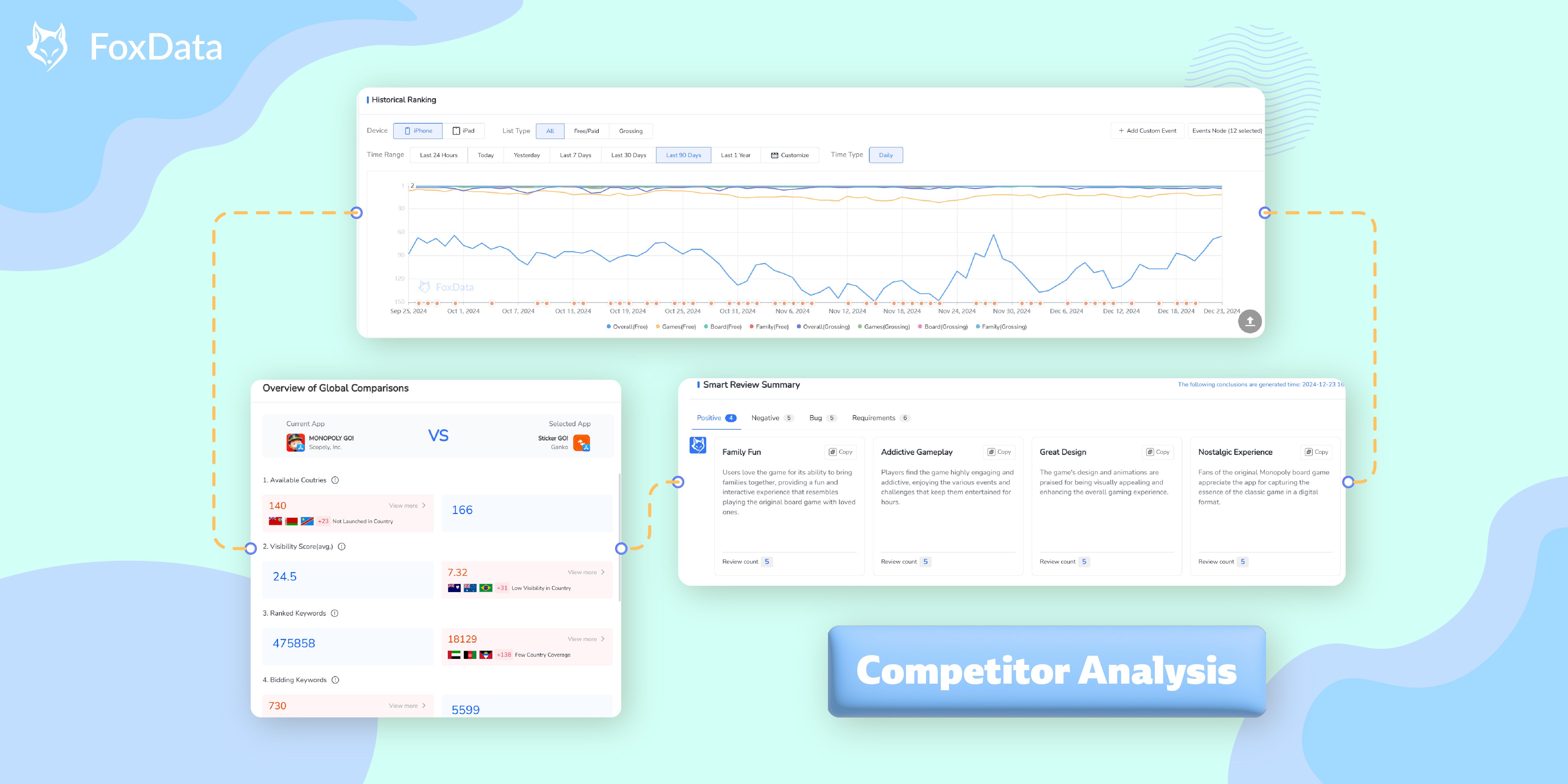
The mobile app industry continues to expand annually, making it crucial for app developers, marketers, and publishers to stay informed about their competition.
Lagging behind rivals can jeopardize the success of your mobile app projects.
To maintain a competitive edge, ensure you assess these four critical factors during your next competitor analysis.
Step 1: Identifying Your Competitor Apps
The initial step in conducting a competitor analysis for mobile apps is to identify your competitors.
These are apps that:
- Belong to the same niche or category as your app.
- Target a similar audience.
- Offer similar features or functionalities.
- Appear in app store search results for relevant keywords.
If you're unsure where to begin, consider using the FoxData to help find your competitors. Here's 3 methods that you can proceed:
Utilize FoxData for Recommendations
FoxData analyzes your app and uses AI to suggest suitable competitor apps to track.You can directly find and add your competitors by clicking the "+ Add Competitors" option located at the top left corner in features like "Category Ranking", "Rating & Reviews", "Competitor", "ASO Keywords", "Estimated Downloads", "Estimated Revenue", "ASO Report", and "ASO Impact Analysis".
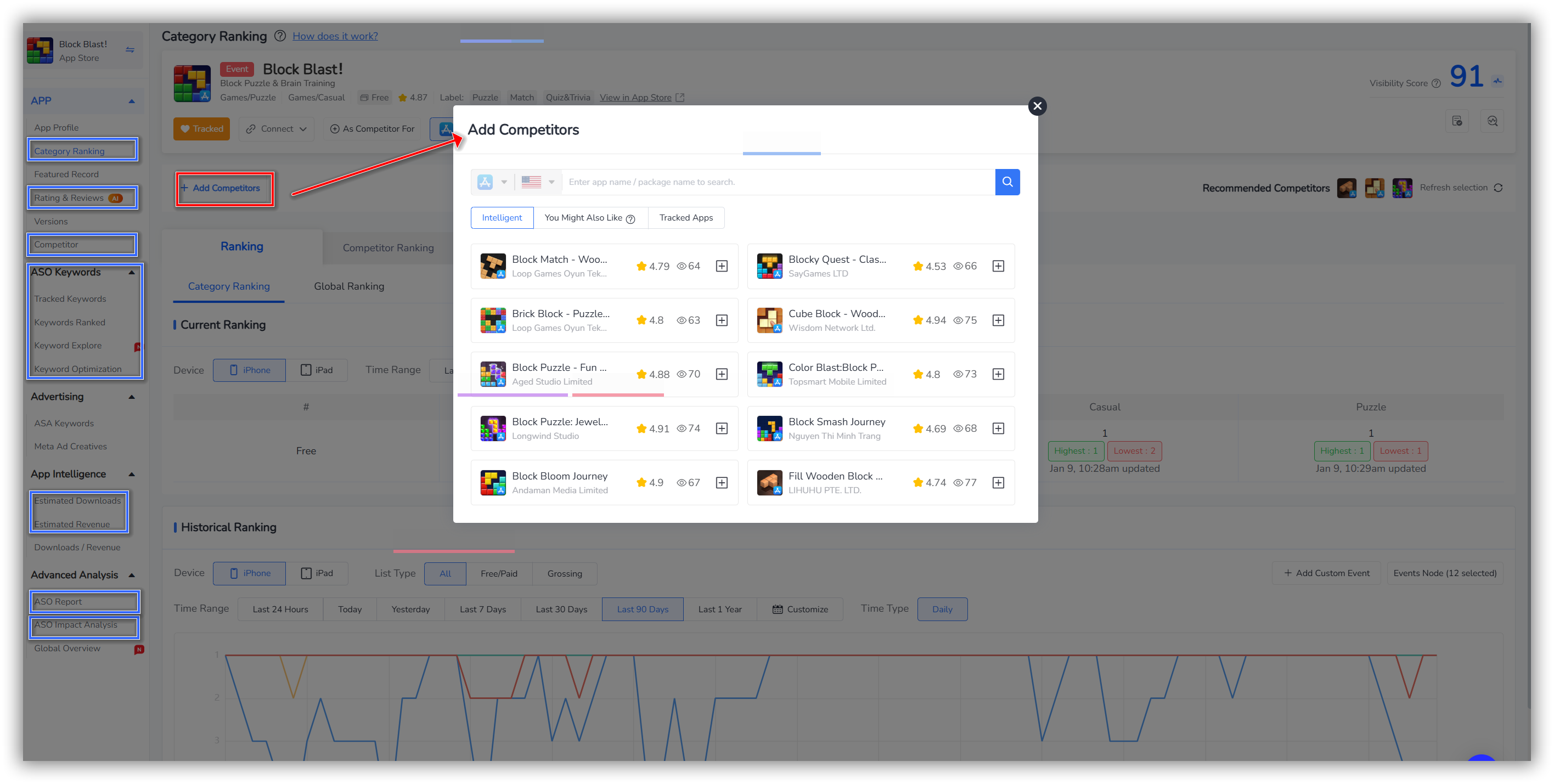
Conduct Live Search for Relevant Keywords
Perform live searches for relevant keywords using FoxData's "search" feature. For example, if your app is related to flight bookings, search for the keyword "flight" to see competing apps.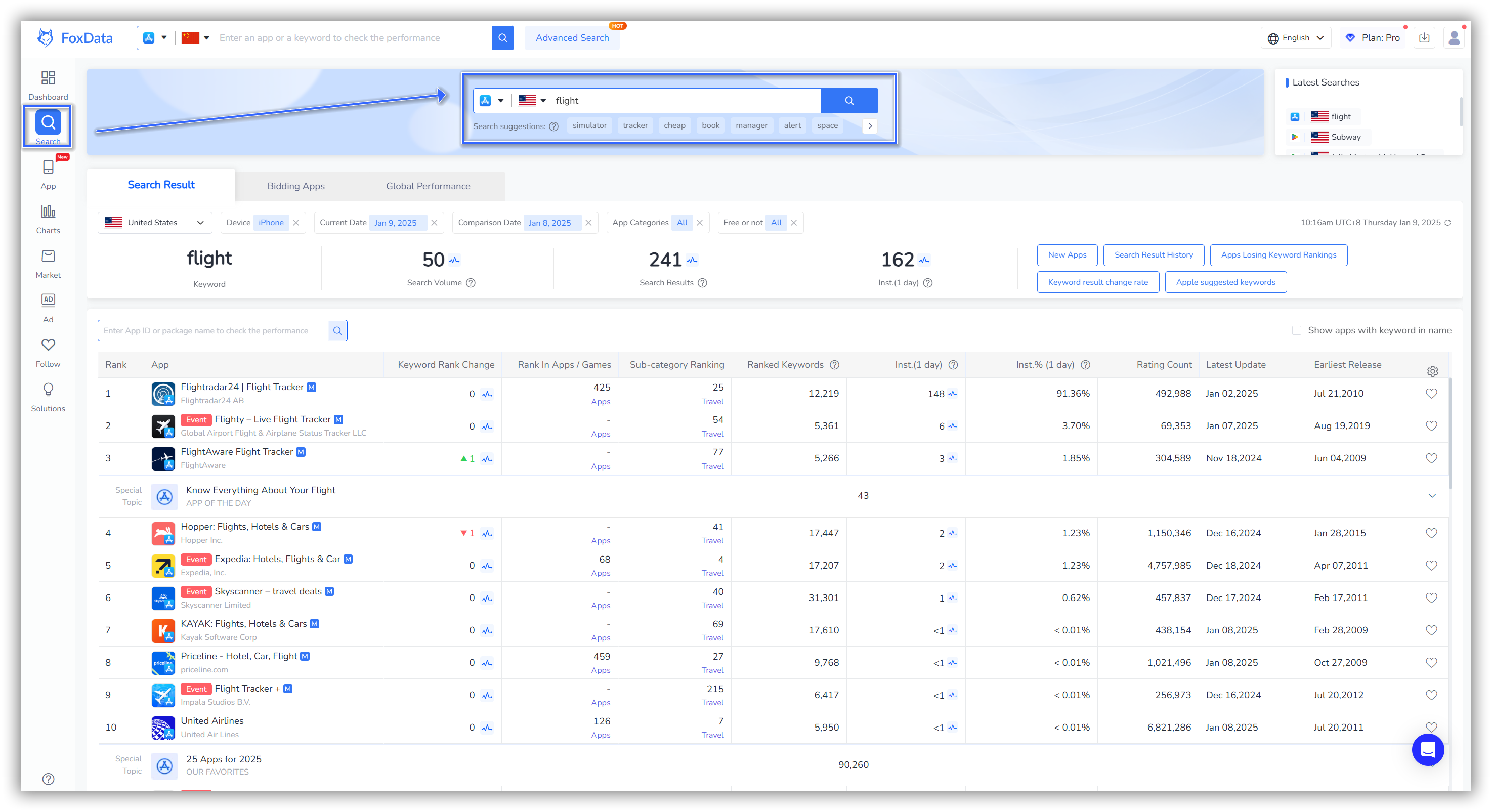
If you have more detailed competitor targeting, you can use the "Advanced Search" at the top to filter your competitors with more specific criteria.
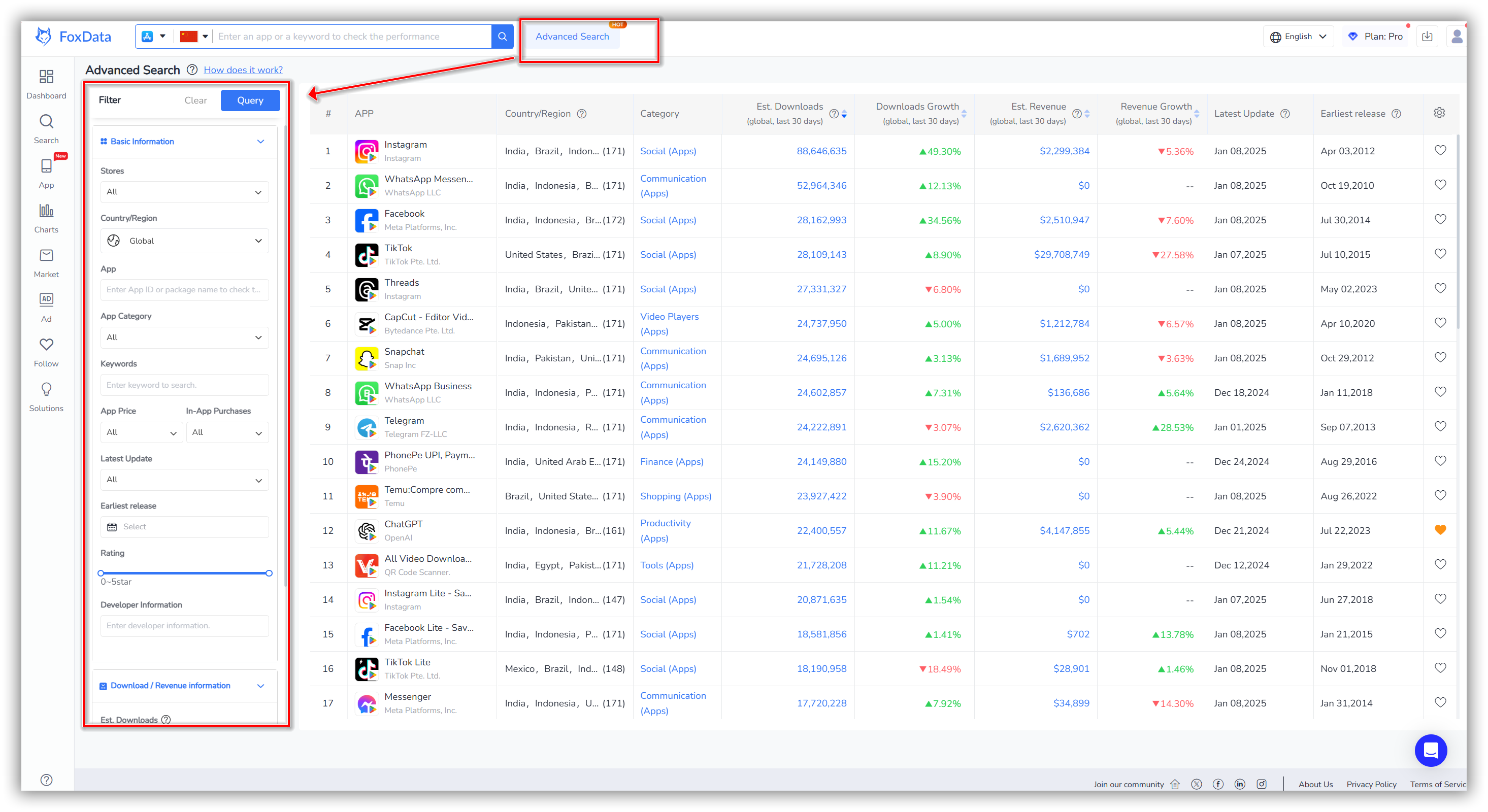
Examine Top Chart Rankings
Explore the "top charts" to discover additional competitor apps with your category or your tag, which can provide further insights for your analysis.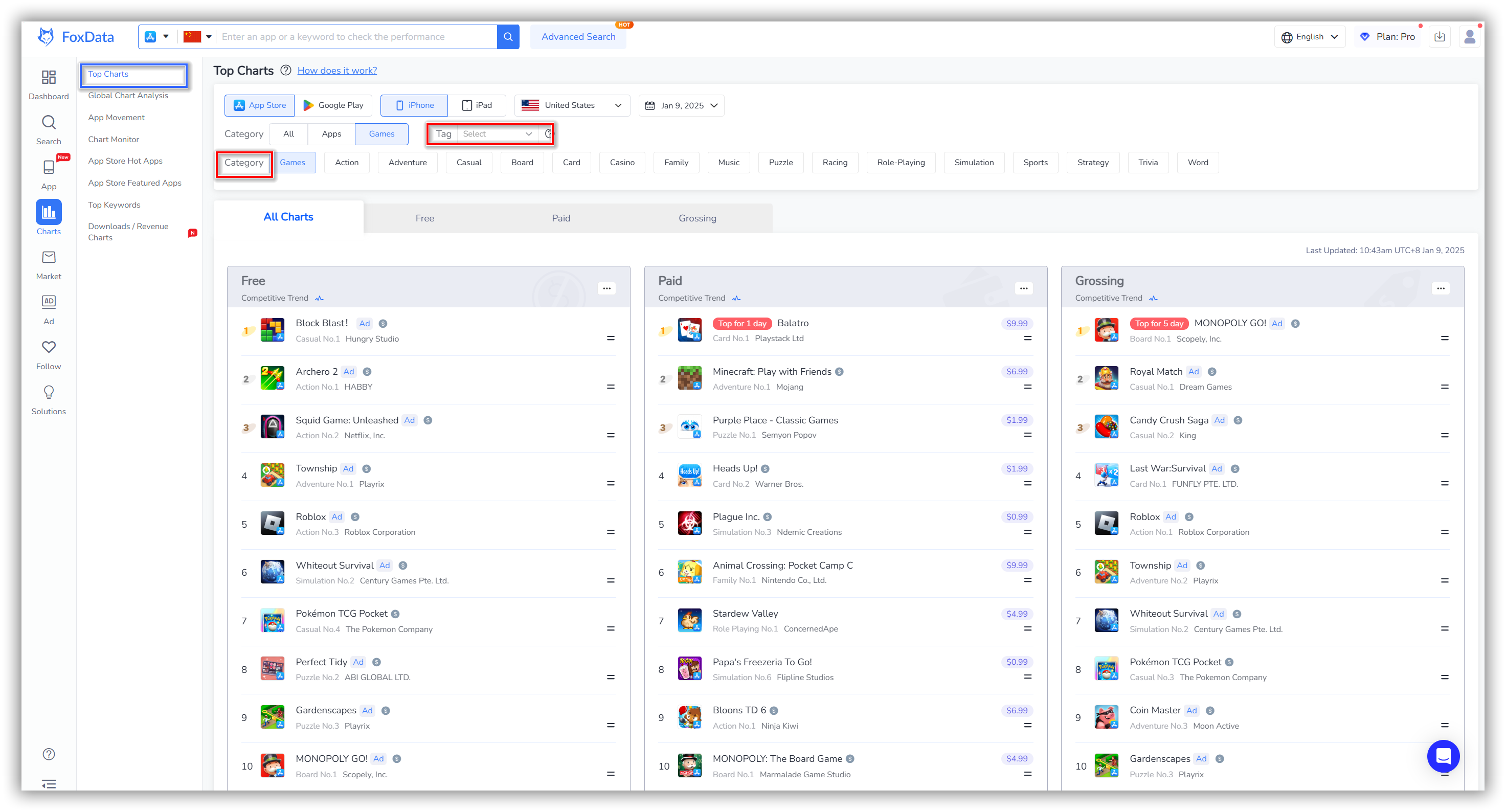
For each competitor identified, add them to your tracking list within FoxData. This step is crucial for advancing your competitor analysis.
Step 2: Analyzing App Store Category Rankings for Competitor Insights
These rankings provide valuable insights into the dominant players and emerging entrants in the market. To kickstart your competitor analysis, focus on examining the leading apps within your industry and your primary competitors.
This data suggests that the travel app category is relatively stable and challenging to disrupt, as significant shifts in rankings are rare and have remained consistent.
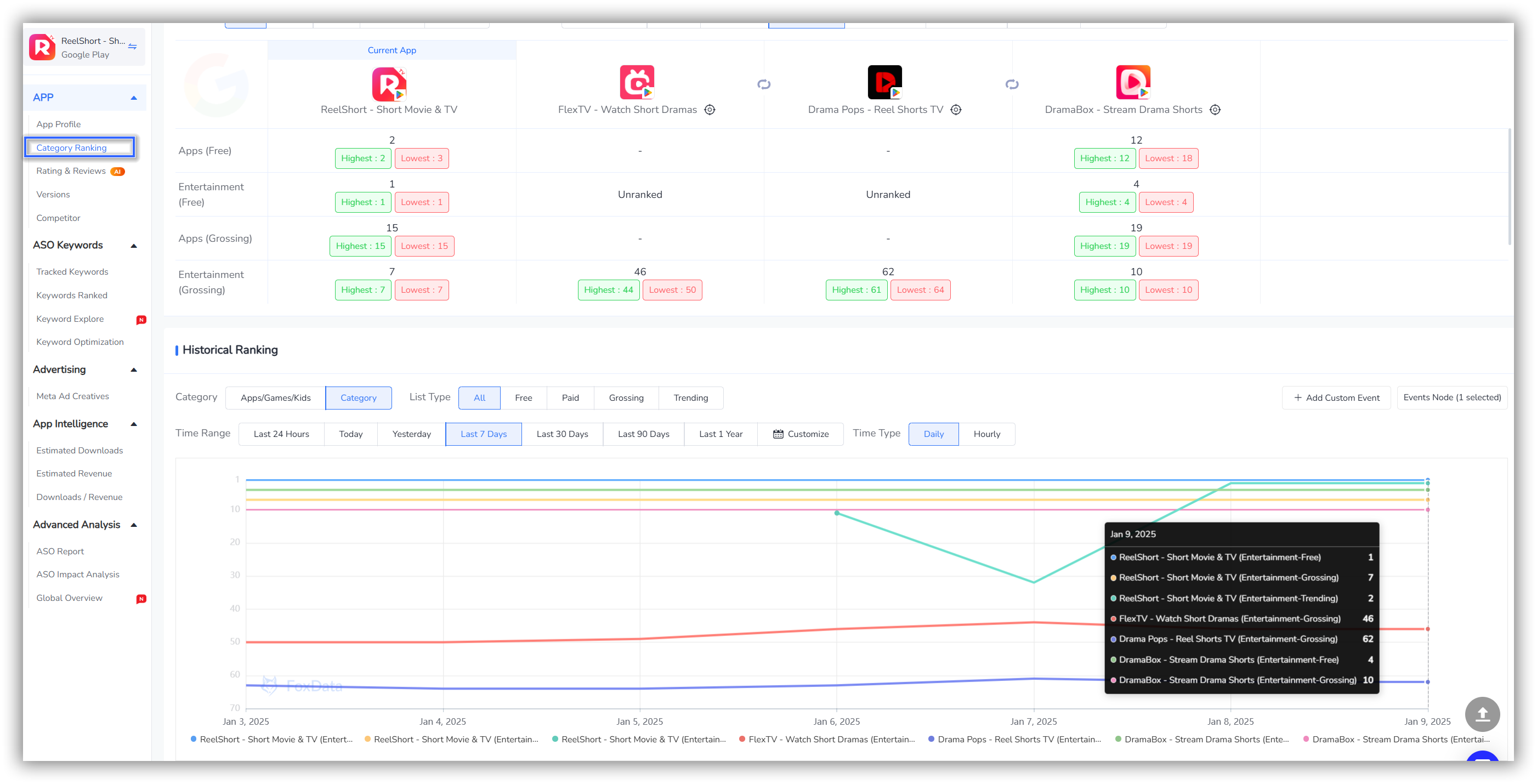
Step 3: Evaluating Competitors' App Store Rankings
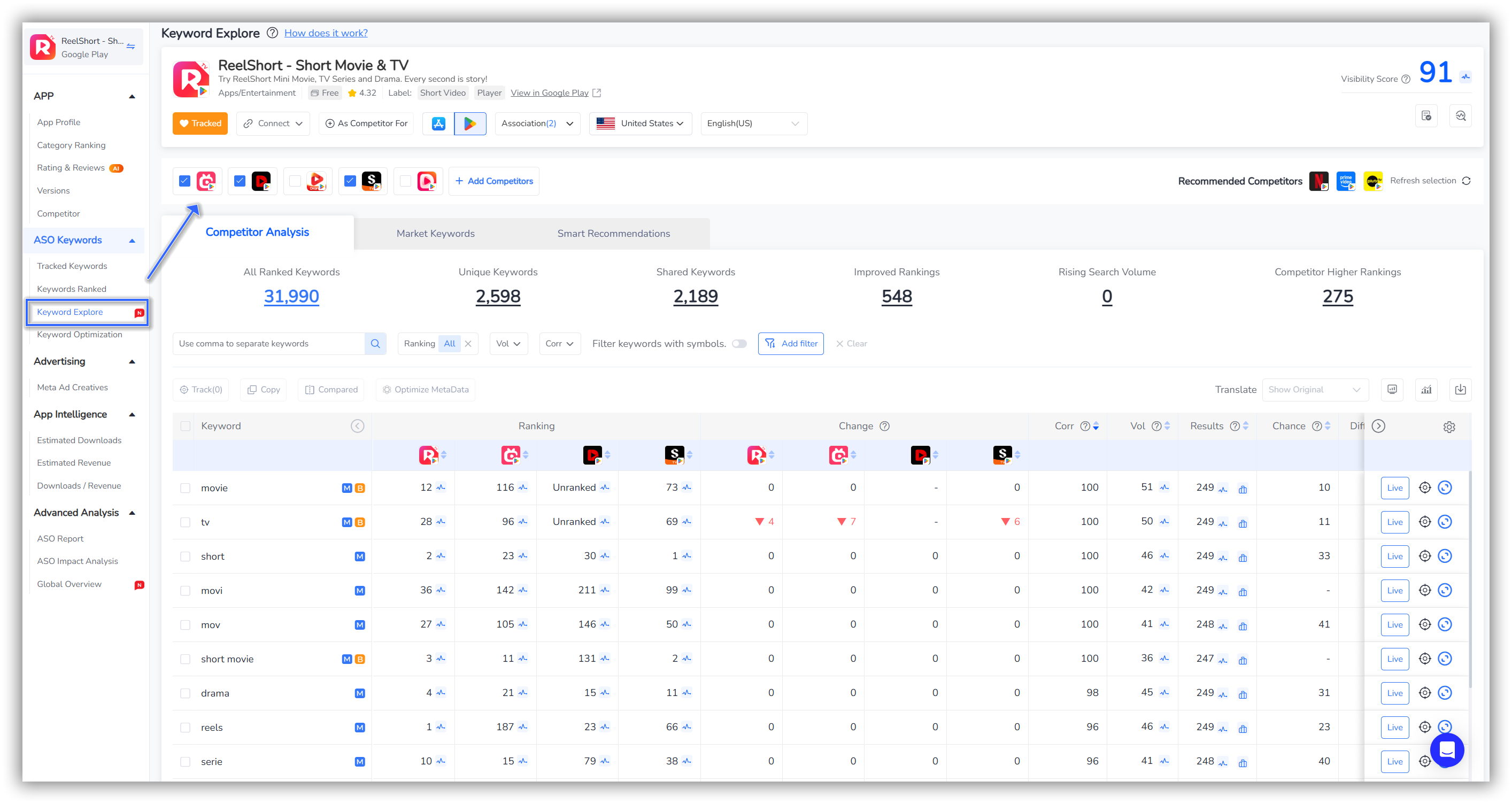
👏 Expert Tips: It's important to note that using obvious competitor app names as keywords in your app store listing is discouraged by both Apple and Google. Such practices could lead to your app update being rejected. Instead, focus on using generic, relevant keywords in your app store listings.
Step 4: Discovering Competitor Apps' Strengths and Weaknesses
Conducting a competitor analysis is an effective method to uncover the strengths and weaknesses of competing apps. There are two primary approaches to achieve this:
Overview of Global Comparisons
By examing and analyzing the global comparisions of your competitor apps with "Global Overview-Competitors", you can identify their main strengths and weakness of their app performance.
Then you can conduct targeted in-depth research on both their strong and weak performance areas, and optimize for localization across different country markets.
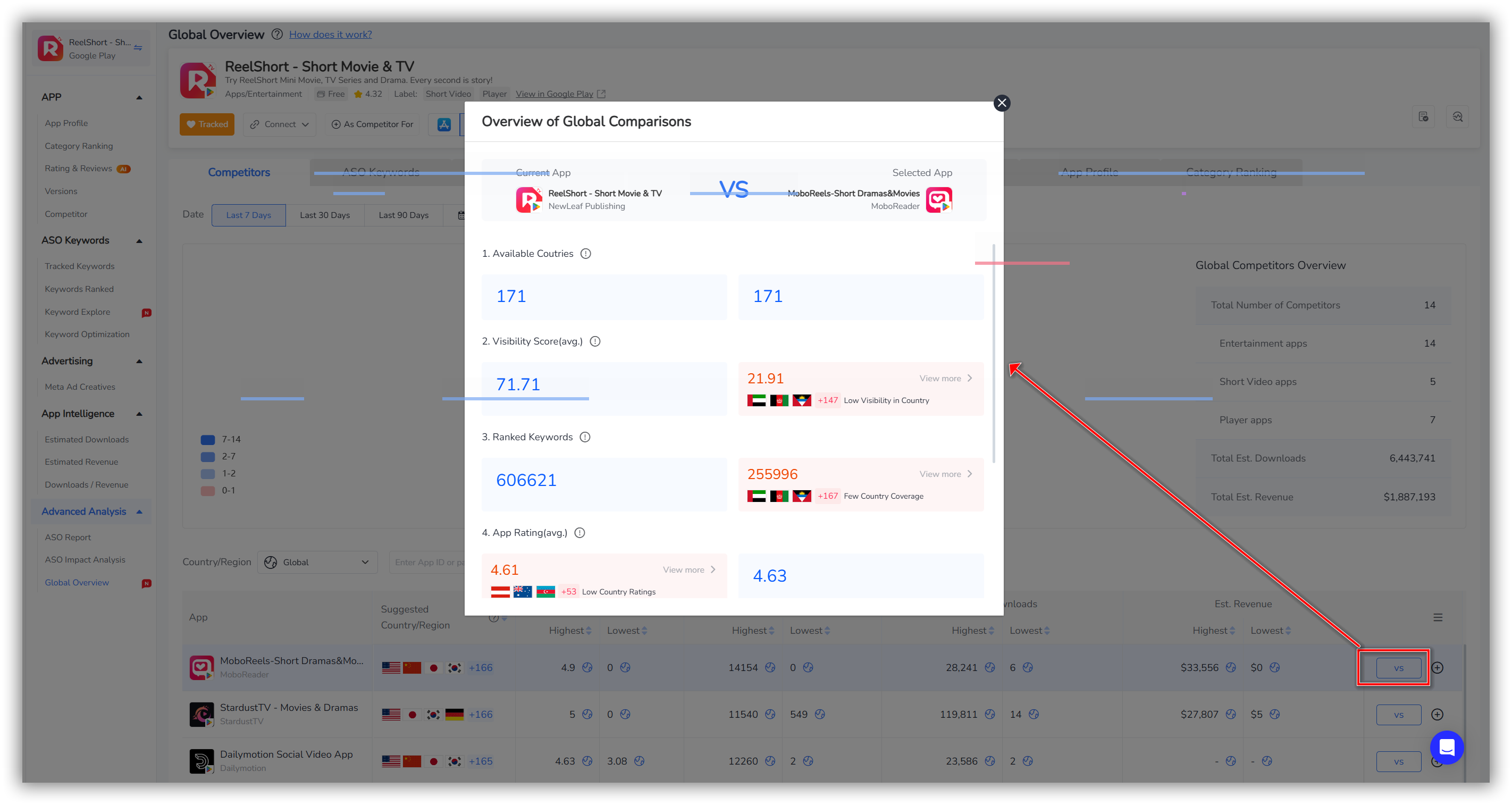
💡If you want to learn more about the "Global Overview-Competitors" feature, feel free to check out this guide: How to Discover New Market Opportunities With "Global Overview-Competitor"
Review User Feedback
Pay attention to any suggestions for improvements, as these can be valuable for shaping your app development roadmap.
FoxData-AI Review Summary provides you with a Smart Review Summary featuring categories like "Positive", "Negative", "Bug", and "Requirements".
You can directly understand the genuine thoughts and needs of users regarding your competitors. Optimizing your product based on these user demands will help enhance the user experience of your competitor’s users.
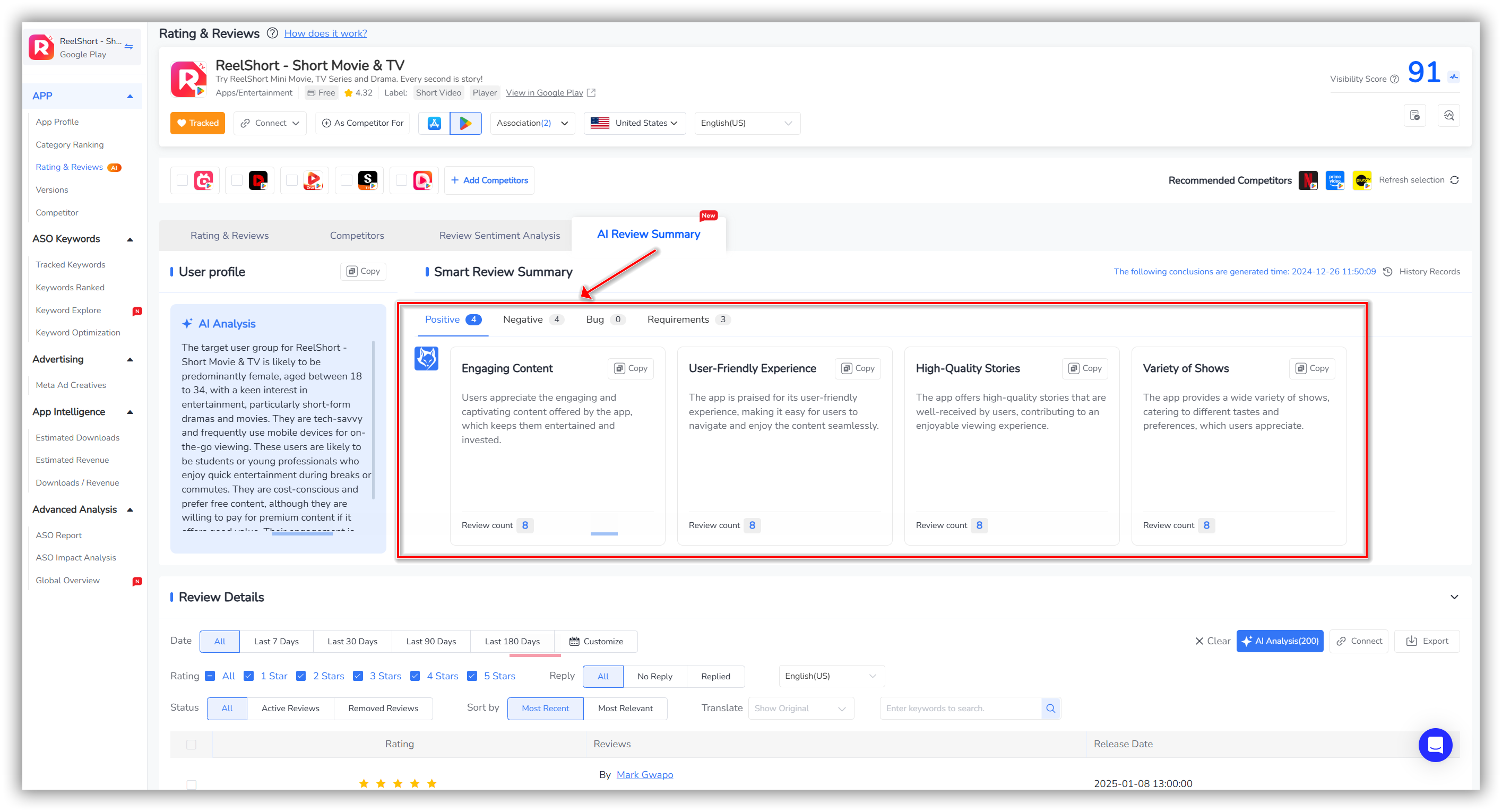
If you're not sure how to use this feature effectively, just click on "How does it work?" at the top left of the feature page to view the guide.
👉 Or click here to check it out.
Just register on FoxData to access these data and study the changes in market trends.
Now just join FoxData and embark on a journey of business growth as we unveil a FREE App Data Analytics Tool, which boosts your downloads, increases your user base, and watches your performance soar to new heights!






